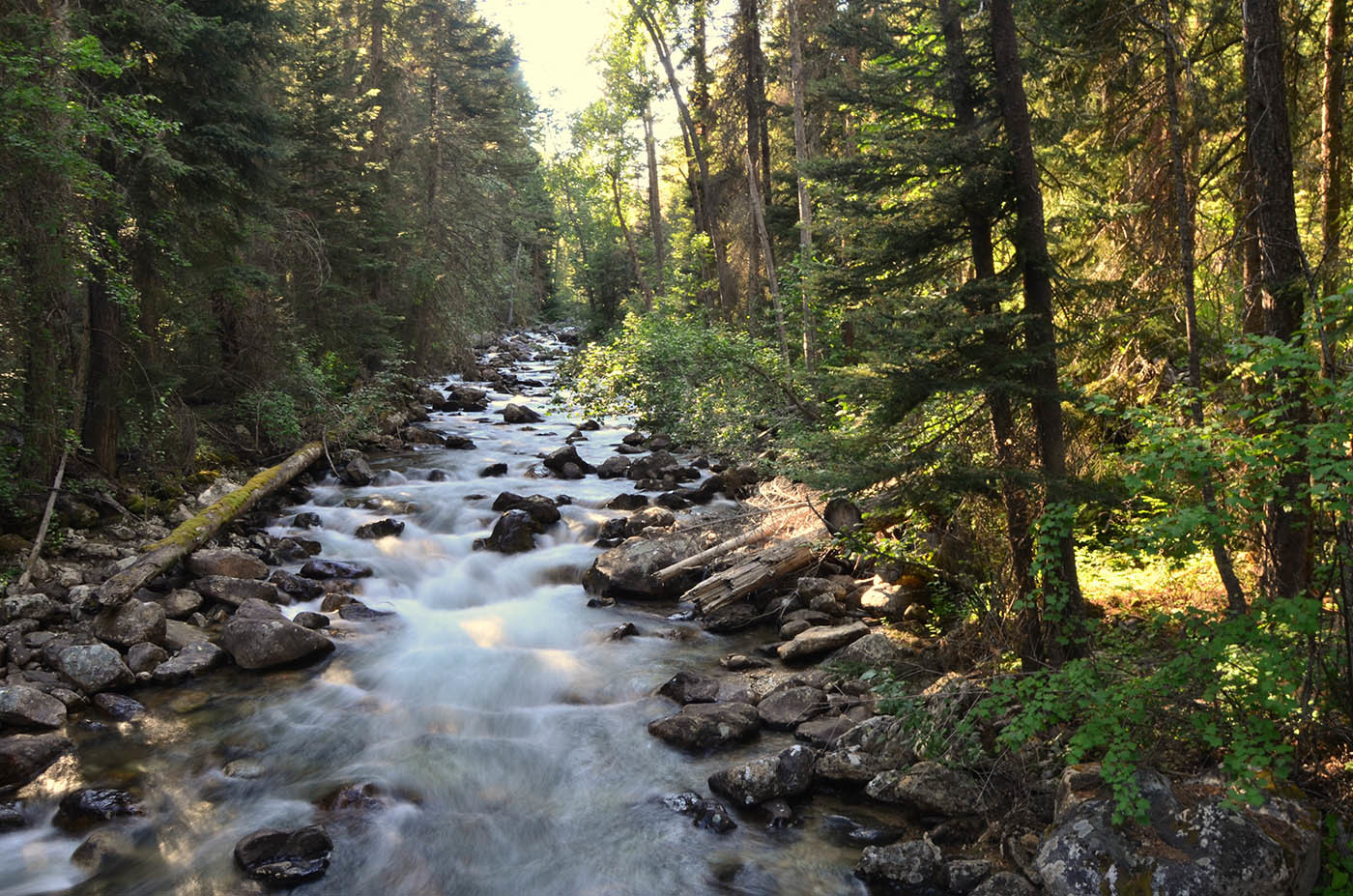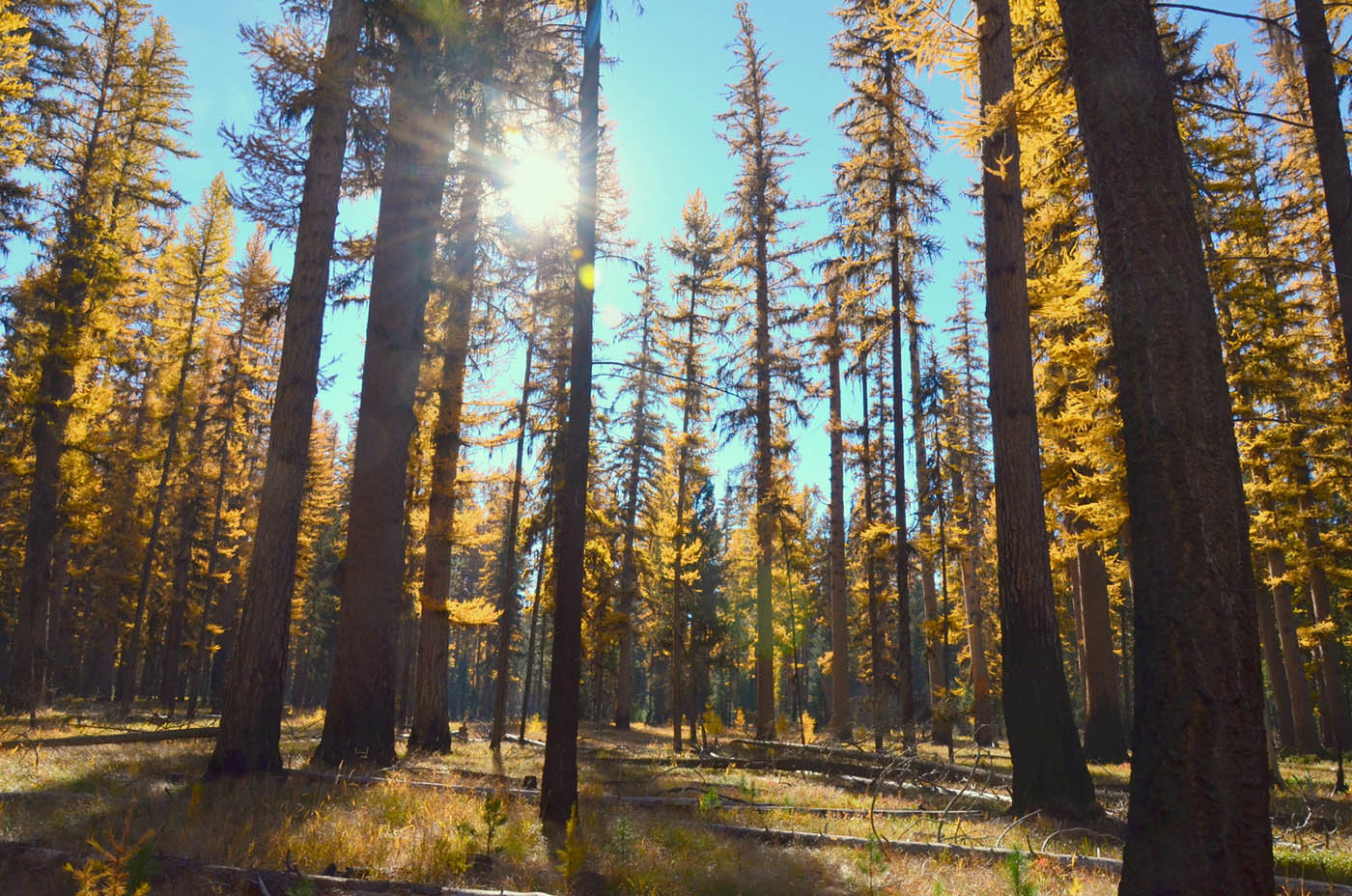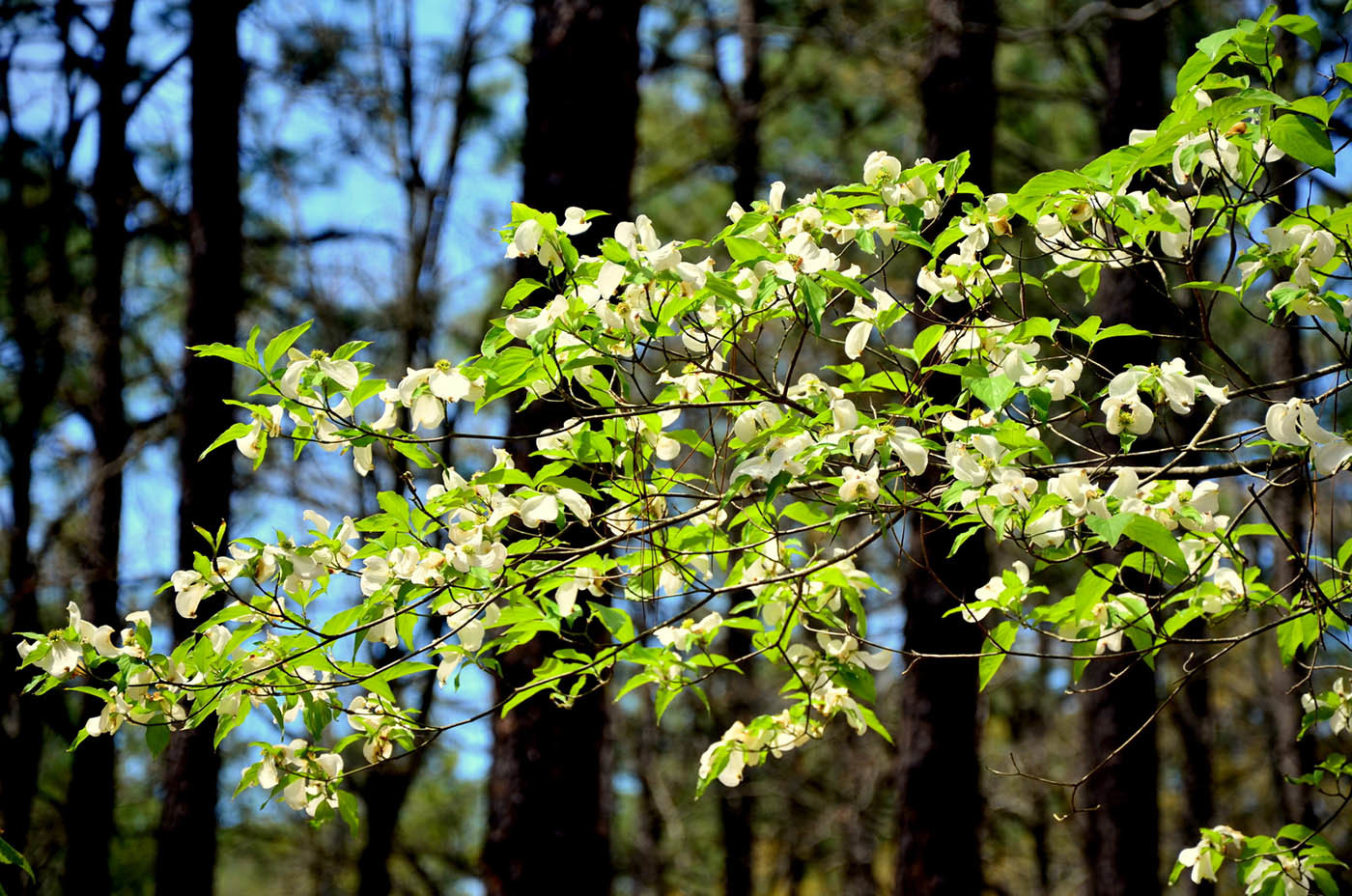This content was originally posted on Keen Footwear on October 16, 2018.
The thick grey clouds finally made good on their threat of rain. Fat drops pelted the cedar and fir trees, dripping onto our heads and shoulders. Though it was August, this corner of southeast British Columbia was cool and damp, and the rain quickly stole any heat we generated while hiking along the faint game trail. We ducked under the low-hanging branches of a massive Douglas-fir tree and plopped down to wait out the rain.
The forest enveloped us, physically and emotionally. Rain dripped from tree limbs and splattered onto the duff-covered ground. Saturated, fragrant air carried the scent of cedar and cottonwood trees. Mist drifted across the forest floor, an ephemeral shroud obscuring the dark tree trunks and glistening shrubs. We sat in silence just watching and listening.
Moments turned into minutes, and minutes into a half hour. And almost imperceptibly, my mind seemed to let go of the day’s worries and stresses. When the first raindrops dropped from the soggy sky, I started fretting about the prospect of a wet, cold night at camp. Walking with my bear spray at the ready, hyper-alert for a passing bruin and concerned about our unfamiliar surroundings, I wondered how far from camp we were and what would happen if we got lost making our way back? I worried also about the water samples we had gathered for the nonprofit we were volunteering with: Did we collect them correctly? Had we got the labeling right?

Somehow, just watching and listening to the forest seemed to ameliorate my anxieties. I didn’t focus my mind on anything particular, but when we finally slipped the tree’s (mostly) dry embrace and shouldered our packs for the final push back to camp, I wasn’t as worried as I had been. Camp was where it was and we’d find it in due time. We’d followed the right protocols and our samples would be fine. There hadn’t been any bear signs along the path, and they were likely high up on the mountainsides, gorging on the late season huckleberries anyway.
SEEING TREES AS MEDICINE
While I didn’t know it at the time, I had just dabbled in what the Japanese call “forest bathing” or “shinrin yoku.” Directly translated, shinrin yoku means “taking in the forest atmosphere” or, simplified: “forest bathing.” Codified in Japan in the early 1980s, forest bathing has become popular across the world as growing empirical evidence details the benefits of spending quiet, focused time in nature.
Forest bathing combines elements of intentional observation with a purposeful focus on the present. Unlike other nature-based sports like hiking or trail running, forest bathing doesn’t include a destination or a physical goal. Rather, forest bathers hone in on the way the forest looks, smells, sounds, and feels, using all of their senses to closely observe their surroundings. Many forest bathers walk slowly through a living forest, taking in the sounds, smells and sights, while others may sit or lie down. The point isn’t about the action, it’s about the intention.
To western sensibilities, which tend to be more focused on goal-oriented pursuits, the practice is intriguing if perhaps confusing. While the health benefits of physical activities have long been understood, science is starting to describe why just being in nature can provide curative and restorative benefits. The website shinrin-yoku.org lists the following as scientifically proven benefits of forest bathing: reduced blood pressure, reduced stress, improved mood, increased ability to focus, accelerated recovery from illness or surgery, increased energy levels, and improved sleep. Other benefits accrue as well, including: deeper and clearer intuition, deepening of friendships, increased flow of energy, and an overall increase in sense of happiness.
Sure, hiking or trail running provides cardiovascular benefits, endorphin release, and other health advantages, so many of us are tempted to think: Why not do those activities in nature and get double the rewards? Forest bathers would argue that if we slow down and take time to directly observe our forest surroundings we’ll achieve many of the same benefits of physical activity, but also reap additional benefits that deepen our connection to nature and to each other. It’s hard (for me at least) to be present and truly notice the smells, sounds, and sights of nature when I’m gasping for breath on a trail run or summit bid. I may feel great after I’m done, but I’m missing a lot when I’m focused on my pace or the peak I’m climbing.

HOW TO START FOREST BATHING
1. First, leave your devices in the car. You don’t need your phone, your camera, or your GPS watch. They’ll just distract you.
2. Also, leave behind the notion of a destination. Just find a nice forested spot (national forests are great opportunities for forest bathing, though any natural setting will do) and start to amble through the trees.
3. Look, listen, smell, feel, and (yes) taste. Unlocking your five senses is a key component to forest bathing. So count the different shades of green you see in the forest. Listen to the birds, the insects and the breeze blowing through the trees. Smell the earth, the bark of a tree or the sweet scent of a wildflower. Breathe deeply through your mouth and try to taste the air (I know this sounds hokey, but give it a try). Feel the earth through your shoes (or, better yet, take them off and walk barefoot on the forest floor), run your fingers along a leaf or a branch or dip your hand into a stream. Savor the observances you make with each sense.
4. Keep doing it. As with any practice, the more you do it, the better you’ll get. With each new session, your ability to disconnect from the stresses of life will get easier and your connection to the forest will get deeper and more powerful. At least, that’s what the websites and online guides say. If you feel like you need some help getting started, a growing legion of practitioners are organizing forest-bathing meetups, holding classes, and training certified forest bathing gurus. Training can help to be sure, but as my experience deep in the British Columbia forests showed, the simplest forms of forest bathing are intuitive and relatively easy to execute on your own.

It’s tempting to dismiss forest bathing as a new-agey scam and its acolytes as misappropriating a foreign cultural practice, but it’s harder to argue with the science. In fact, the Japanese have included forest bathing as a foundational component of preventative health care since the 1980s. In the U.S. a growing cadre of doctors are prescribing nature to their patients, evidence that western medicine is recognizing the benefits of just simply being in nature.
Perhaps the best thing about forest bathing is that you really don’t need anything except a forest and a willingness to try. You don’t need special gear or a fancy watch or high-tech clothing. You don’t need a base level of fitness, in fact, nearly anyone can practice forest bathing. All you need some trees and some time.

